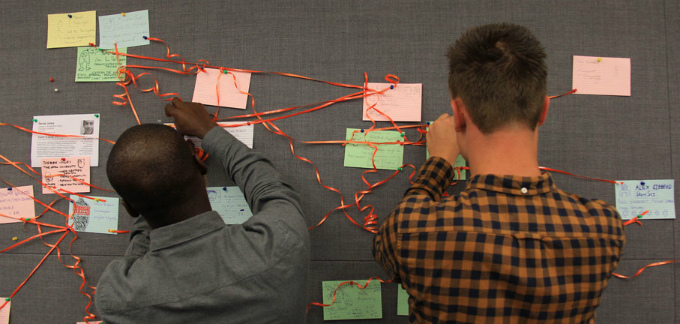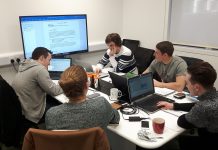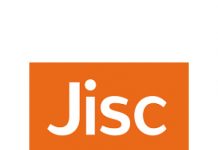Technology is helping to make the staff / student relationship more productive. Sarah Davies of Jisc reports on how universities are embracing technology to improve learning and teaching, with the help of students.
‘Efficiency’ is a term which is still regarded with some suspicion by many people working in learning and teaching within higher education, due to its association with cost-cutting and a perceived trade-off with quality.
However, looking at the long hours worked by so many staff in HE, I believe it’s crucial for everyone that universities ensure as far as possible that staff and student planning, effort, contact time and administration is used to best effect to enhance the student learning experience. And that’s really at the core of efficiency in learning and teaching practice. If it still sounds a bit dull, it shouldn’t – it can involve some really interesting innovation, but that innovation needs to balance the quality, efficiency and responsiveness of practice, and be potentially repeatable and scalable.
Let’s start with something that’s a priority to get right on any course, because it is such a big driver of student and staff effort: assessment and feedback. We’ve seen many examples of innovation and process improvements which aim to maximise the benefit derived from the effort expended on planning, setting, completing, marking and feeding back on assignments.
Student satisfaction
Manchester Metropolitan University reviewed their course, department and university-level policies and processes around assessment, and also analysed their data to identify the factors which have most impact on students’ satisfaction and attainment. They then used this information to make two key changes: looking at assessment timetables to reduce bunching of assignments and overall assessment burden; and publishing personalised deadlines, feedback return dates, and provisional marks to all students via their portal, virtual learning environment and mobile app.
Our Digital Student research has confirmed that most incoming students have high expectations of the way that technology will be used to manage the more administrative aspects of their university life, and in many cases this includes a demand for electronic submission and return of their assignments. Most institutions are somewhere along the way to putting it in place across the board. The English Department at Queen’s University Belfast calculated that the introduction of e-submission and marking saved 20 days per year in administrative staff time.
The benefits of the approach are summarised in our electronic management of assessment guide, and we have a current project to help tackle some of the common problem UK universities are having with electronic management of assessment.
Feedback has been a hot topic for many years now, with staff feeling that they are spending hours providing fulsome and timely feedback for students and students still identifying this as an area of concern.
The University of Dundee tackled this on one of their programmes by moving to a technology-supported approach to team tutoring which keeps a shared record of communications around assignments and feedback and enables the course team to have a meaningful and well-informed discussion with students about their longitudinal progress through the course. This has led to workload savings for staff, and improved final results for students.
In addition to assessment, the other key area to get right on any course must be how contact and non-contact hours are best used to get students engaged in the topic, learning and thinking for themselves.
‘Flipped’ approaches
Although students tend to have a lasting affection for the lecture, they often say that they would like them to be more interactive. Glasgow Caledonian University have taken a well-planned approach to supporting lecturers to make use of clicker technologies, resulting in some innovative teaching and ‘flipped’ approaches which have been well-received by students.
Understanding the challenges students face, building on their ideas to fix things, and exploring how any innovation in learning, teaching and student support plays out across the students involved is key in making it successful, which is why many institutions are seeing significant benefits from the use of students as change agents in their digital projects.
The University of Winchester has learnt so much from the use of student fellows that the university has quickly increased the number of student fellows from eight to 60, in a large initiative managed jointly by the university and the student union. We’ve seen some great ideas from students through our Summer of Student Innovation, and have gained really useful insights into the key issues for students in higher and further education.
That’s just a quick whizz through some of the key trends in technology-enhanced learning which I’ve seen deliver enhancements and efficiencies in recent years, and there are many more which I already feel bad for not having space to mention. If there are other game-changers which have really made a difference to your institution, I’d love to hear from you.
Sarah Davies is the head of change implementation support (education/student) at Jisc








